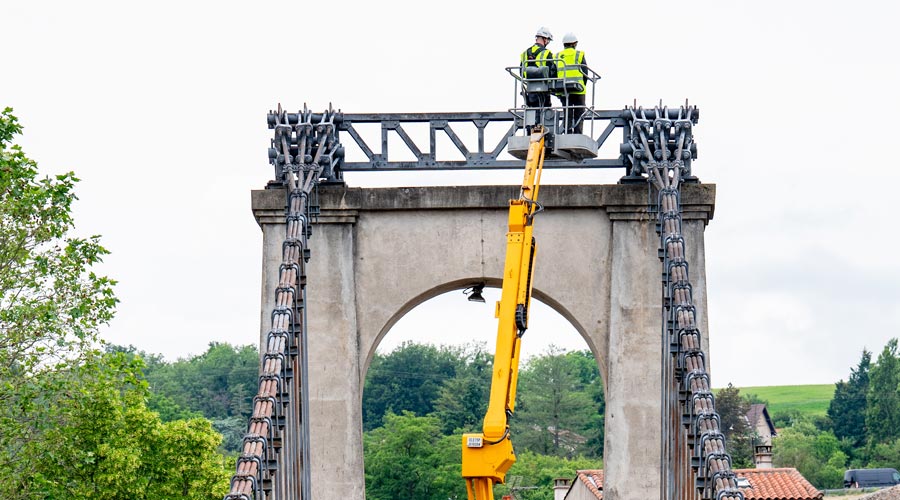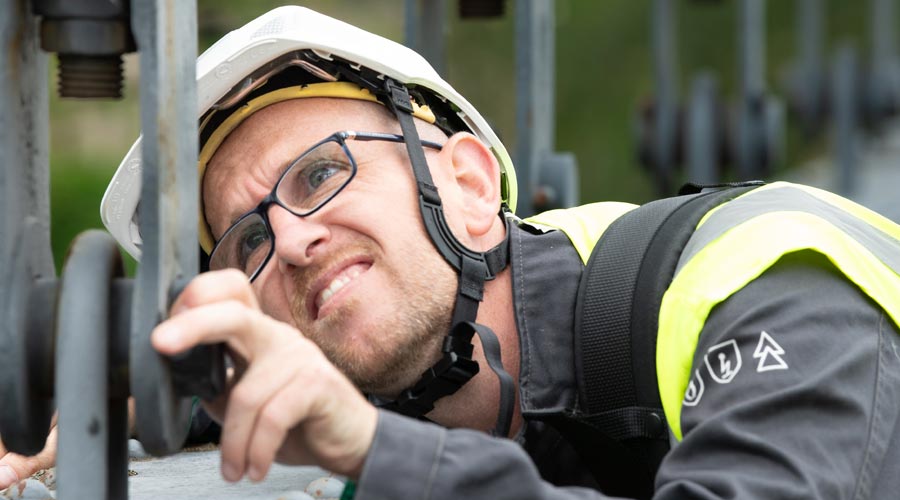Monitoring bridges
a major challenge
36 million euros. This is the amount of money allocated to the programme to survey and assess the bridges and walls of almost 12,000 local authorities that have volunteered to take part.
The structures are first inventoried and briefly assessed. In a second phase, a detailed inspection is carried out on the structures identified during the first phase and showing signs of damage.
Interview with our Civil Engineering Inspector
Joseph Bernard


What is the regulatory framework and what are the constraints associated with the assignment?
"This is a detailed inspection governed by the Technical Instruction for the Surveillance and Maintenance of Engineering Structures (ITSEOA). The main constraint on these structures is accessibility, since all the surfaces of the bridge have to be touched. That's why, on this structure, a gondola and rope access were deployed to reach the various surfaces to be inspected.
What does the job involve? What information is provided to the client?
"In concrete terms, it involves a detailed inspection of the structure and an exhaustive report of all the damage. These findings are then listed exhaustively on a plan, and analysed in a report. A conclusion is drawn, with recommendations on the ongoing maintenance of the structure and the action to be taken. This may involve repairs, investigations or further studies. For this type of structure, for example, this could mean tensioning the cables or recalculating the structure".


Finally, what are the regulatory obligations of project owners?
"The technical instruction for the surveillance and maintenance of engineering structures (ITSEOA) requires annual visits and detailed inspections to be carried out every 6 years".
As part of the National Bridges Programme, Cerema* wishes to support local authorities in the management of their engineering structures. The aim is to provide answers about the structural condition of the structures in order to optimise and organise the maintenance to be carried out on the structures for which the local authorities are responsible, thereby ensuring their longevity and guaranteeing the safety of users.
"As part of the National Bridges Programme, we carried out audits to check that Apave met the requirements and had fully assimilated the methodologies that had been developed. This was the case" Richard Vaissière Deputy Manager of the Sustainable Infrastructure and Engineering Works Group - Centre-East Territorial Division Clermont-Ferrand Agency - Cerema
* Cerema (Centre d'études et d'expertise sur les risques, l'environnement, la mobilité et l'aménagement) is a public body dedicated to supporting public policies, under the dual supervision of the Ministry for Ecological Transition and the Ministry for Territorial Cohesion and Relations with Local Authorities.
Find out more
Find out more about our support offer
Discover our other
news
